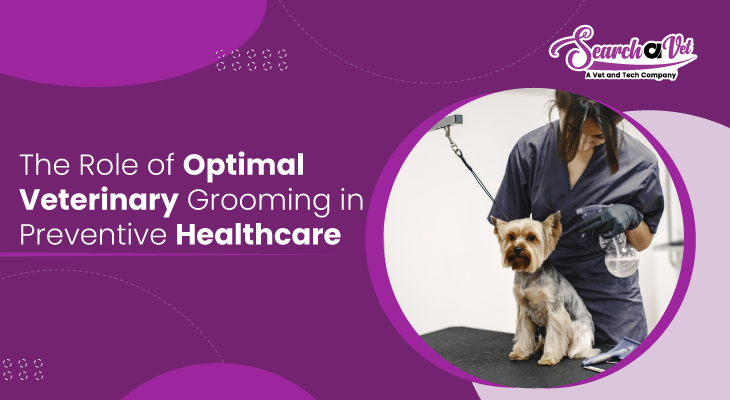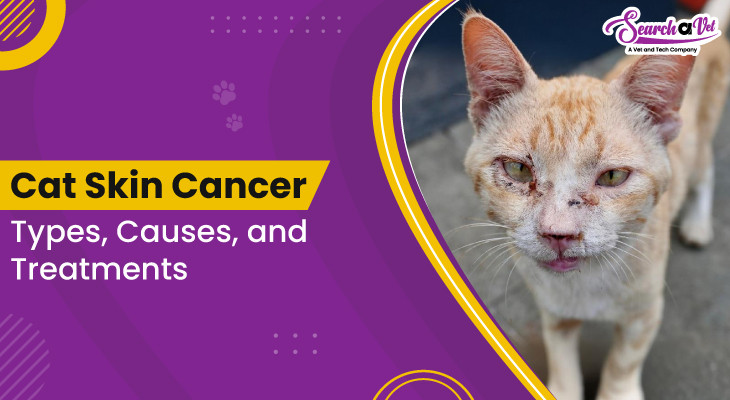The Role of Optimal Veterinary Grooming in Preventive Healthcare
 Jun 14, 2024
Jun 14, 2024

Veterinary professionals must promote preventative healthcare to maintain a healthy practice and animal welfare.
Vaccinations, parasite control, and monthly examinations are crucial, but perfect veterinary grooming is sometimes overlooked.
This article will discuss the potential benefits of pet grooming and learn how a veterinarian-recommended grooming program may increase animal patients' comfort, skin and coat health, and early disease detection.
Potential Benefits of Veterinary Grooming
Grooming in the vet context involves a lot more than just washing and brushing.
Pet grooming, carried out by experts with knowledge of animal anatomy and health, has several practical advantages that aid in preventative care.
Early Identification of Health Concerns
During a full-body grooming treatment, the pet's whole body may be examined up close. Groomers are trained to detect irregularities a casual owner could overlook, including rashes, parasites, ear infections, and dental issues. Early diagnosis of these problems is essential to intervene quickly and get better treatment results for optimal animal health solutions.
Better Skin and Coat Health
Grooming regularly gets rid of dead hair, dirt, and debris, which helps the skin cells change over and keeps the coat in the best possible shape. Not only does this make the pet seem better, but it also keeps them healthy by avoiding allergens, matting, and skin diseases.
Reduced Shedding
Veterinary grooming can save the day for pet owners who are dealing with excess shedding. Techniques like de-shedding and thorough brushing, which can significantly reduce the amount of fur shed, may be achieved by minimizing allergies in the home and making pet ownership more bearable.
Parasite Control
An infestation of parasites, including fleas, ticks, and other types, might be extremely detrimental to a pet's health and well-being. Veterinarians are most likely to screen for fleas and ticks when owners take their pets to them for grooming services.
Ear Care
Many pet owners worry that their pet may have an ear infection. Grooming allows vets to check the ears for redness, discharge, or smell, which might indicate an infection. To keep the pet's ears healthy and free of infections, clean them regularly as part of the grooming treatment.
Anal Gland Care:
Some canine breeds are more likely to experience anal gland affected. Groomers trained by veterinarians may safely and hygienically stimulate these glands, sparing animals pain and illness.
Dental Hygiene
A typical grooming session may not always include dental cleanings, but many veterinary clinics offer these as part of their patient care packages. Removing tartar and plaque can help lower the risk of periodontal disease, leading to better animal health solutions.
Veterinary Grooming (Techniques) for Different Pet Types
Pet grooming practices should be tailored to the specific needs of each pet species and breed.
Here's a breakdown of some common companion animals:
Dogs:
- Brushing frequency depends on coat type: Long-haired dogs require daily brushing, while short-haired breeds may need it a few times a week.
- Bathing frequency should be balanced—excessive bathing can strip natural oils. Consult with the owner about their current routine and recommend adjustments if needed.
- Pay close attention to areas prone to matting, like behind the ears, under the legs, and around the tail.
- Regularly clean ears, especially for floppy-eared breeds.
- Trim nails to prevent discomfort and potential injuries from overgrown nails.
Cats:
- Most cats are good at self-grooming, but regular brushing can help remove dead hair and prevent hairballs.
- Bathing is usually not necessary unless the cat gets especially dirty. Consult with the owner before recommending a bath.
- Regularly check ears for signs of infection.
- Trim nails if necessary, especially for declawed cats who rely on their front paws for climbing.
Small Mammals:
- Rabbits and guinea pigs require regular brushing to remove excess fur and prevent hairballs.
- Bathing is typically not recommended; spot cleaning may be necessary in specific cases.
- Regularly check ears and teeth for signs of problems.
Birds:
- Most birds benefit from regular misting with lukewarm water to maintain feather health.
- Bathing may be necessary for some species but consult with the owner about their routine and specific needs.
- Provide opportunities for preening by offering safe perches and materials like natural wood branches.
Veterinary professionals can guide pet owners on proper grooming techniques for their specific animals.
Collaboration Between Veterinarians and Groomers
For meaningful results, veterinarians and vet technicians should have good ties with competent animal groomers. Teamwork is the optimal tool for increasing the scope of veterinary practice.
Here's how collaboration benefits both parties:
- Shared Expertise:
Vets can source detailed facts if the doctors tell them of a specific problem their facility is coping with, resulting in a tailored grooming practice. In the same way, it is sometimes the case that the attendants may find any irregularity in the body while bathing the animals.
- Improved Client Education:
Vets may inform pet parents about the importance of regularly taking their pet to see a veterinary surgeon and the benefits of a good pet groomer. Vets can also help owners find good pet groomers. Most information, even those not from a vet, can be a source of the Groomers’ education. They can propagate veterinarian recommendations in such areas as parasite presence and proper brushing.
- Enhanced Patient Care:
By a joint effort or mutual agreement, the whole community of veterinarians and groomers guarantees this snappy health status for pets and a good quality of life in general.
Building a Successful Veterinary Grooming Program
Veterinary practices that incorporate both veterinary care and grooming services into their offerings can experience several benefits:
Increased Client Satisfaction:
Clients who appreciate the convenience and expertise of veterinary grooming are more likely to be satisfied with the overall care provided by the practice.
Improved Pet Health:
By promoting preventive healthcare through grooming, veterinary practices contribute to their animal patients' overall health and well-being, leading to fewer visits for treatable conditions.
Enhanced Revenue Streams:
Offering pet grooming services can be a valuable additional revenue source for veterinary practices.
Here are some key considerations for building a successful veterinary grooming program:
- Veterinary staff who assist with grooming should receive proper training on animal handling, grooming techniques, and safety protocols.
- A designated space equipped with appropriate bathing stations, drying equipment, grooming tools, and comfortable holding areas is essential.
- Develop tiered grooming packages catering to different pet needs and budgets. This allows pet owners to choose the level of service that best suits their animal.
- Promote the availability of veterinary care and grooming services through your website, social media channels, and in-clinic posters.
- Educate clients on the benefits of grooming for their pets' health.
Wrapping Up!
Veterinary grooming, if done by a trained professional and as a part of the preventive healthcare plan, can help promote the health and welfare of pets. There are various ways for veterinarians to contribute to raising standards of care for their animal patients. They include teaming with groomers, educating clients, and implementing a well-structured program.
If you are interested in free veterinary education or a source of helpful resources or want to read the latest news from the industry, join Vet and Tech. They host free veterinary webinars from expert speakers, and you can earn free RACE-approved CE credits here.
FAQs
How is veterinary grooming different from at-home grooming?
Veterinarian grooming goes beyond bathing and brushing. Trained specialists do a full body inspection to detect skin, parasite, and dental disorders. Veterinary groomers employ pet-safe and comfortable methods and equipment for optimal grooming.
How often should my pet receive veterinary grooming?
Breed, coat type, and health determine vet grooming frequency. Ask your vet for advice. Some breeds need grooming every 4-8 weeks, while others require it every 2-4 weeks.
Can senior pets benefit from vet's grooming?
Absolutely! Senior pets often have specific needs, and vet grooming can be adapted to their comfort. Gentle handling techniques and modifications to the grooming routine can ensure a positive experience for your older companion. Veterinary grooming can also help identify health concerns that may arise with aging.




